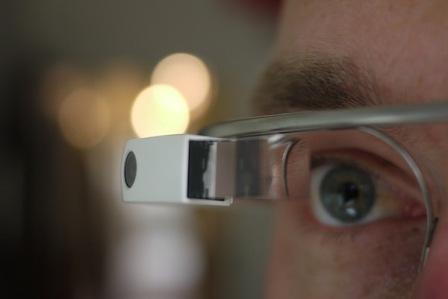While most wearable technology devices have been developed with a clear application in mind – think fitness statistics, vital sign monitoring and wrist bands that display your text messages – others are likely to be cool technologies waiting for applications.
Google Glass, the search giant’s prototype glasses with a built-in wireless connection and a visual display, might be said to be one of these. Although there are already consumer applications in the works for e-mail, Web surfing, navigation and text messaging, the enterprise and vertical industry applications are still very much in the idea stages.
While the healthcare industry has its own wearable technology apps, some physicians and clinicians are wondering about down-the-road applications in healthcare. John Halamka, chief information officer of CareGroup Health System, recently mused on the applications of Google Glass in healthcare settings, and he came up with some interesting ideas.

Image via Impact Lab
Patient documentation is an important part of getting treatments right, but today it’s at the mercy of the written (or typed) word. Google Glass could provide an edge in this area, recording “real-time video of the patient encounter, captured from the vantage point of the clinician's Google Glass. Every audio/visual cue that the clinician sees and hears will be faithfully recorded,” writes Halamka. That way, the physician or other worker could literally review the encounter with the patient and be able to visually note the patient’s symptoms again.
In the emergency department, Google Glass could act as a visual dashboard that stays with the physician, nurse or physician assistant (PA). Rather than having to hunt down a paper file to read, the medical worker could get stats on the spot.
“Emergency physicians work in a high stress, fast paced environment and must be able to quickly access information, filtering relevant information and making evidence-based decisions,” writes Halamka. “Imagine that a clinician enters the room of a patient – instead of reaching for a keyboard or even an iPad, the clinician looks at the patient. In ‘tricorder’-like fashion, vital signs, triage details and nursing documentation appear in the Google Glass.”
There are also applications for medication dosing to ensure dosages are correct (and for the right patient), and to keep track of which medications have already been administered.
While it may take a while before we see physicians, nurses and emergency medical techs wearing Google Glass units, the potential is great, and the applications are therefore inevitable.
Edited by
Alisen Downey